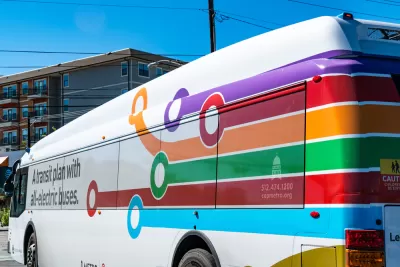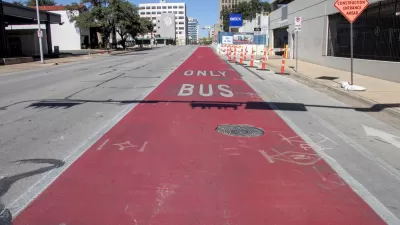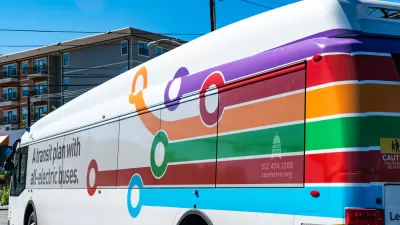The details of drastic reductions to the proposed building program for Austin’s Project Connect long-range transit plan are now open for public comment.

The Austin Transit Partnership (ATP), the government corporation empowered to finance and develop the Project Connect long-term transit plan in Austin has released a proposed revision of the plan, as promised after cost increases forced reductions to the plan.
Nathan Bernier reports for KUT on the revisions, which were leaked earlier this month, but made public on Tuesday, March 21 at a public meeting at the Austin Public Library.
ATP has spent months paring down Project Connect in preparation for the release this week. After seeing the costs for the Project Connect program balloon from an estimated $5.8 billion to $10.3 billion, the plan would now spend less than $5 billion, “including a whopping 40% cost contingency,” reports Bernier.
The ATP hopes a $3.5 billion cushion “will make its pitch more appealing to the federal government,” which is expected to fund up top half of the cost included in the Project Connect program.
The source article, linked below, includes details for each of the five remaining alternatives—all of which represent a significant reduction from the original plan Austin voters approved in the November 2020 election. The original plan called for two new light rail lines, four new rapid bus routes, and a new commuter rail line, as well as expanded service on the city’s existing commuter rail route, in addition to anti-displacement measures and on-demand transit shuttles.
Additional challenges could still await Project Connect if conservative members of the Texas State Legislature manage to approve a proposed bill that would limit ATP’s powers to finance projects. “The Austin Transit Partnership will collect public feedback over the next six weeks,” according to Bernier.
FULL STORY: Austin's light-rail plans have shrunk. Here are 5 new options.

Study: Maui’s Plan to Convert Vacation Rentals to Long-Term Housing Could Cause Nearly $1 Billion Economic Loss
The plan would reduce visitor accommodation by 25,% resulting in 1,900 jobs lost.

North Texas Transit Leaders Tout Benefits of TOD for Growing Region
At a summit focused on transit-oriented development, policymakers discussed how North Texas’ expanded light rail system can serve as a tool for economic growth.

Why Should We Subsidize Public Transportation?
Many public transit agencies face financial stress due to rising costs, declining fare revenue, and declining subsidies. Transit advocates must provide a strong business case for increasing public transit funding.

How to Make US Trains Faster
Changes to boarding platforms and a switch to electric trains could improve U.S. passenger rail service without the added cost of high-speed rail.

Columbia’s Revitalized ‘Loop’ Is a Hub for Local Entrepreneurs
A focus on small businesses is helping a commercial corridor in Columbia, Missouri thrive.

Invasive Insect Threatens Minnesota’s Ash Forests
The Emerald Ash Borer is a rapidly spreading invasive pest threatening Minnesota’s ash trees, and homeowners are encouraged to plant diverse replacement species, avoid moving ash firewood, and monitor for signs of infestation.
Urban Design for Planners 1: Software Tools
This six-course series explores essential urban design concepts using open source software and equips planners with the tools they need to participate fully in the urban design process.
Planning for Universal Design
Learn the tools for implementing Universal Design in planning regulations.
City of Santa Clarita
Ascent Environmental
Institute for Housing and Urban Development Studies (IHS)
City of Grandview
Harvard GSD Executive Education
Toledo-Lucas County Plan Commissions
Salt Lake City
NYU Wagner Graduate School of Public Service




























